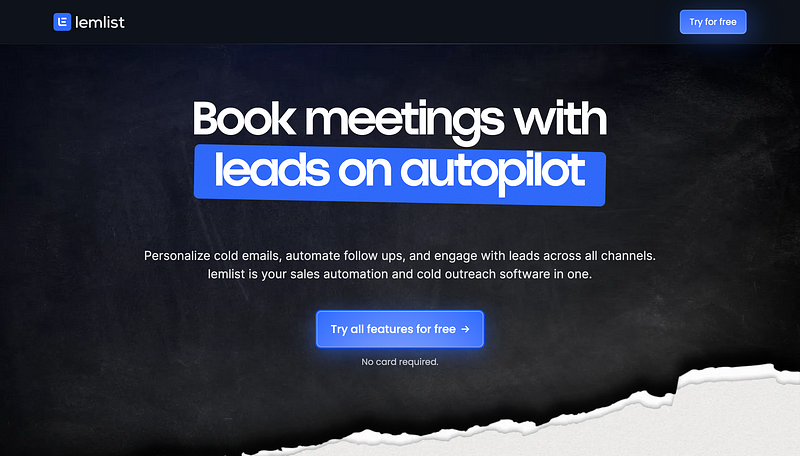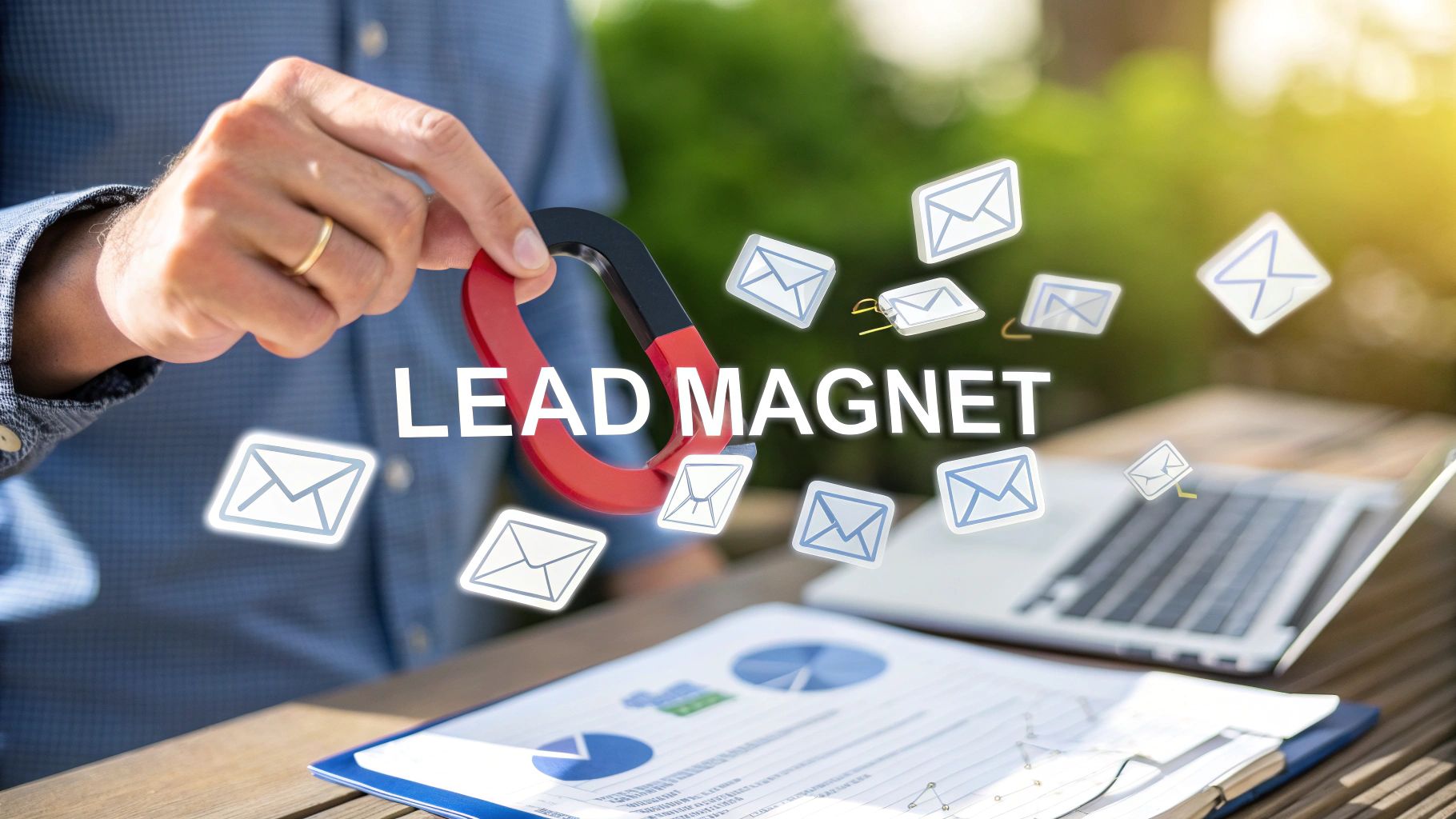Supercharging Your Outreach: Leveraging Lemlist and Apollo for Client Acquisition
A fundamental part of any business is effective outreach to new clients. The digital world has provided organisations with new options and…

A fundamental part of any business is effective outreach to new clients. The digital world has provided organisations with new options and tactics for connecting with their target consumers, but the sheer volume of data accessible can be intimidating. This is where tools like Apollo and Lemlist come in handy. These effective tools can help you streamline your outreach plan and make it more efficient and productive. This post will show you how to use Lemlist to reach out to new clients via LinkedIn, email, and cold calling, with Apollo used to collect contact information.
Step 1: Using Apollo, extract contact information
Before you can communicate with your potential clients, you must first obtain their contact information. This is where Apollo comes in. Apollo, as a data-driven engagement platform, helps businesses to obtain verified emails and direct calls from their target audience.
To extract contact information using Apollo, you must first define your target audience based on factors such as industry, firm size, job title, geography, and others. After you enter these facts, Apollo will generate a list of possible connections who meet your requirements. The tool verifies the accuracy of the information submitted, providing you with a confirmed list of possible clients to contact.
Step 2: Configuring Email Sequences on Lemlist
Lemlist is a robust email automation solution that enables organisations to send personalised cold emails on a large scale. The first thing you should do is import the Apollo contact list. You can now set up email sequences with the contact information of potential clients.
You can use Lemlist’s pre-existing email templates or develop your own. It’s critical to customise these templates to reflect your brand and the specific client you’re contacting. You may automate follow-ups and track email openings and clicks to assess the success of your outreach activities.
Step 3: Use Lemlist to reach out on LinkedIn.
Lemlist also supports LinkedIn automation, which allows you to send connection requests and messages to prospective clients. The procedure is identical to that of creating an email sequence. You programme a series of events, such as sending a connection request followed by a personalised message. To make your messages more personal and engaging, incorporate variables such as first name, company name, or work title.
Step 4: Make a cold call
Cold calling is a tried-and-true strategy of reaching out to potential clients. You can call those on your list using Apollo’s contact information. While Lemlist does not directly support cold calling, it does assist in the management of the process. Within your email sequences, you may include tasks that remind you or your sales staff to call after a specified period of time or email exchanges.
Step 5: Customise Your Outreach
While Lemlist and Apollo can help you automate and streamline your outreach process, don’t overlook the importance of customization. Both tools allow you to add personal touches to your messages. Apollo, for example, includes information such as firm size, industry, and job description, which can aid in segmenting and personalising your messaging. Similarly, Lemlist enables the addition of personalisation tokens to email templates, making each email feel unique to the recipient.
Furthermore, Lemlist’s dynamic landing pages and pictures give a visual layer of personalisation to your message, making it stand out. You can include a potential client’s name, company logo, or LinkedIn profile picture in an email image. This visually appealing feature is an effective technique to capture the recipient’s attention.
Advanced Features and Tactics:
Beyond the basics of putting up outreach programmes, Apollo and Lemlist both provide additional capabilities that can dramatically improve the efficacy of your initiatives. A/B testing, which is offered in Lemlist, is an extremely useful tool for optimising email sequences. By testing different email subject lines, content, and send timings, you can systematically determine what resonates best with your audience and utilise real data to make informed decisions.
Furthermore, Apollo’s strong segmentation capabilities enable you to adjust your approach depending on specific factors, such as engagement level, previous contacts, or predictive scoring models. This means you may not only better target your audience, but also tailor your communications to the individual requirements and behaviours of distinct segments.
Step 6: Using Data to Improve Outreach
The importance of data in determining the success of your outreach activities cannot be overstated. Apollo and Lemlist both include powerful analytics that can provide insights into the performance of your campaigns.
Apollo can monitor the movement of leads through the sales funnel and provide useful insight into which lead qualities are more likely to convert. In contrast, Lemlist monitors email performance indicators such as open rates, click-through rates, and reply rates.
These insights, when combined, can help you understand what’s working and what isn’t, allowing you to continuously improve your outreach plan. For example, if you observe that emails sent at a certain time of day have a greater open rate, you may alter your email sequence in Lemlist accordingly.
Integration with Other Business Tools:
To make your outreach efforts more efficient, integrate Apollo and Lemlist with additional technologies in your business stack. Both platforms are designed to integrate effortlessly with a variety of CRM systems, ensuring that all customer contacts are recorded and available for future reference. This integration is critical for having a consistent view of your sales funnel and customer touchpoints.
Furthermore, using social media tools will help you improve your LinkedIn strategy with Lemlist, allowing for more dynamic and responsive campaigns. You can also integrate analytics tools to acquire a better understanding of the performance of your outreach initiatives across several platforms. Building a cohesive technology stack around Apollo and Lemlist allows you to optimise workflows, decrease manual activities, and provide a more coordinated approach to client engagement.
Step 7: Maintain and Nurture
The initial outreach may not always produce quick benefits. It is critical to have a follow-up strategy. This component of your outreach is supported by both Apollo and Lemlist.
In Lemlist, you can create a follow-up sequence to engage new clients who haven’t responded to your initial email or LinkedIn message. A small nudge at the right time could mean the difference between a missed opportunity and a new client.
Furthermore, you can segment your leads based on their interaction level and present them with relevant material that nourishes their interest in your product or service using Apollo’s data.
Combining Lemlist and Apollo
The combination of Apollo and Lemlist brings together data and engagement. Apollo identifies possible leads based on your company’s desired consumer profile, while Lemlist assists you in properly reaching out to these leads.
Furthermore, the two systems provide analytics that can help you plan your strategy. Apollo provides information about the quality of leads, whereas Lemlist provides information about the success of your outreach activities. You can observe which emails and LinkedIn messages receive the most responses, as well as which leads are most likely to convert.
Conclusion
The combination of Apollo for data-driven lead generation and Lemlist for personalised outreach produces a potent synergy that can significantly improve your client acquisition approach. This team enables you to rapidly and successfully locate, reach, and nurture potential clients, all while delivering vital data that helps you refine your approach over time. Regardless of these tools’ automation capabilities, remember to keep a human touch in your communications, as developing genuine connections remains a key component of successful customer relationships.
Some of the links in this article are affiliate





